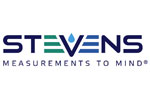Stevens HydraProbe Soil Moisture Sensors
Features
- Instantaneous sensor response with no calibration requirements
- Compact, rugged, zero-maintenance design for long-term deployments
- Easy integration with NexSens data logging & telemetry products
- Free ground shipping
- Expedited repair and warranty service
- Lifetime technical support
- More
Overview
The Stevens Hydraprobe measures 21 different soil parameters simultaneously. The HydraProbe instantly calculates soil moisture, electrical conductivity, salinity, and temperature and supplies raw voltages and complex permittivity for research applications. A compact, rugged design with potted internal components makes the HydraProbe easy to deploy and leave in the soil for years without maintenance.
Electrical Response Parameters
The Stevens HydraProbe design is unique compared to other soil moisture probes because the electrical response of soils can be specified by two parameters - the dielectric constant and the conductivity. The dielectric constant is most indicative of water content, while the conductivity is strongly dependent on soil salinity. Unlike other capacitance-type sensors, the HydraProbe measures both of these components simultaneously. The high-frequency electrical measurements indicating the capacitive and conductive properties of soil are then directly related to the soil's moisture and salinity content, while a thermistor determines soil temperature.
Remote Capabilities
The HydraProbe soil moisture sensor includes SDI-12 or RS-485 outputs for interfacing with external data loggers such as the NexSens X3. Sensor cables can be factory-connected with NexSens UW plug connectors for integration to an X3 data logger sensor port. Data retrieval options using the X3 include direct-connect, Wi-Fi, cellular, and Iridium satellite telemetry.
In The News
Stone Lab: Cyanobacteria Monitoring in Ohio Lakes
Microcystin, one of several toxins produced by the cyanobacteria that form harmful algal blooms (HABs), has become a popular topic of lake research as the human health impacts of HABs become better understood. Stone Lab is one of the leading groups in algal bloom research on Lake Erie and other lakes in Ohio. For more than 100 years, Stone Lab has conducted biology research and provided science education and outreach to the region. Over the years, thousands of individuals of varying ages have learned from the resources Stone Lab provides. Stone Lab’s Research Coordinator and Senior Researcher, Justin Chaffin, learned of Stone Lab while an undergraduate student at Bowling Green State University Fireland Campus.
Read MoreFrom Assessment to Angler: Continual Research Ensures Lake Erie Remains a Beacon of Freshwater Fishing
Lake Erie is well known for its abundant recreational fishing. Anglers come from across the country to try their luck at the “walleye capital of the world” and search for other freshwater species, such as bass, perch, and steelhead trout. As one of the world’s largest freshwater fisheries, much effort is made behind the scenes to maintain fishing opportunities for visitors to enjoy year after year, efforts that often go unnoticed by the public. One of the lake's most important economic and tourism centers is the city of Sandusky, home to the Sandusky Fisheries Research Station . As part of the Ohio Division of Wildlife, the unit serves as a base for assessing fish populations and managing harvest with partner agencies from around Lake Erie.
Read MoreHigh Definition Stream Surveys: Informed Management in Local Waterways
When it comes to environmental monitoring, new stream survey methodologies have revealed a great deal about water quality and streambed conditions over time. Such information can be particularly important in leading restoration initiatives and prioritizing management decisions. Historically, stream surveys have been conducted at a single point along the stream, with data then extrapolated for miles up and downstream. However, Brett Connell, Hydrologist and Director of Sales at Trutta Environmental Solutions, started developing a more intensive stream survey format in his master's program in 2010 at the University of Tennessee.
Read More















